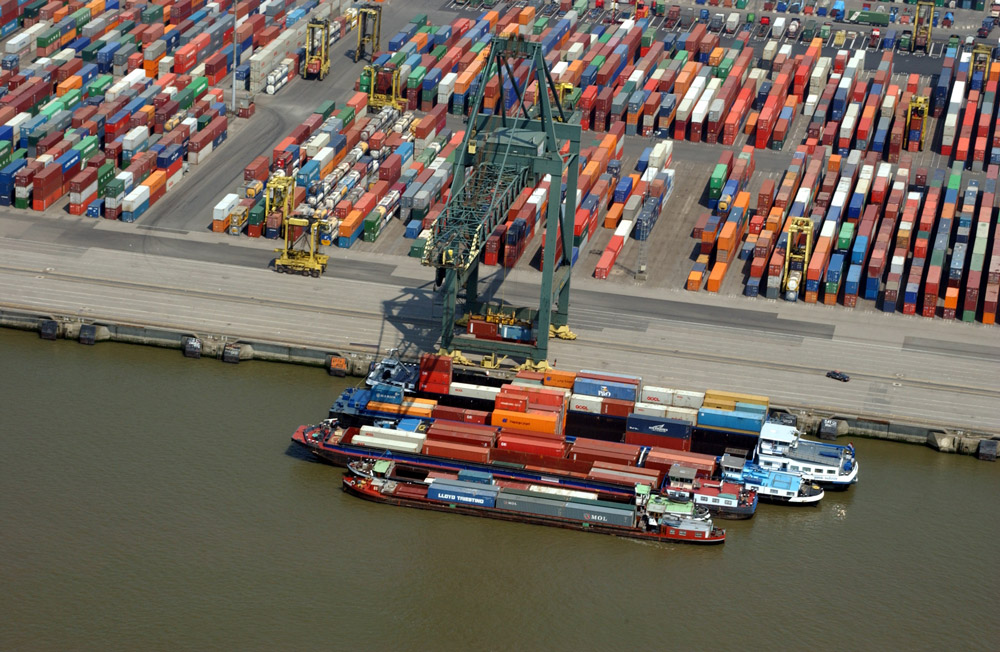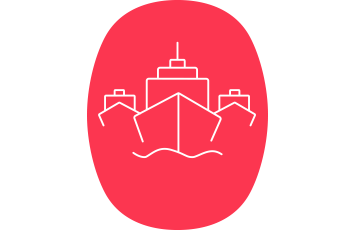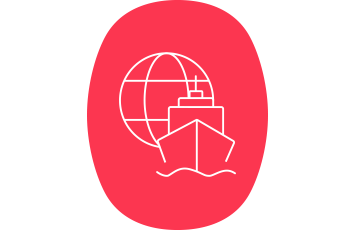Inland navigation: contributing to a better maritime world
Inland navigation is an integral part of Bureau Veritas’ contribution to shaping a better maritime world. This sector of the maritime industry can play a key role in improving sustainability in a wider sense. This mode of transport serves the downstream economy, and must be incorporated into the overall supply chain.
Cleaner alternative
Inland waterways offer a cleaner alternative to road transport. The EU Green Deal mandates that 75% of today’s inland freight transport should move from road to rail or waterways. The shift is likely to see an increasing number of urban areas supplied by inland water transport. Bureau Veritas is set to play an integral part in the development of key technical and safety standards for the industry.
Today, road transport is the most dominant mode of transport in Europe, carrying 76% of total inland freight. Across Europe, there is a strong road culture in the logistics industry, and a lack of knowledge about the possibilities for inland waterways transport.
But European efforts to become climate-neutral by 2050 will see a greater role for inland waterways. The development is expected to diversify the commodities carried by inland operators, and open up new opportunities for the industry.
Expanding fields for inland navigation
Material and equipment related to renewable energy are the first key growth market for inland waterways. This will include the carriage of wind turbines (notably the rotor blades), plus biomass, biofuel and hydrogen cargoes. The sheer size and weight of turbine blades presents a complex technical challenge for operators as they are carried from port to hinterland.
Urban logistics are another potential market. The United Nations expects the percentage of the world population living in urban areas to increase from 50% today to 68% by 2050. The figure will be even higher in the EU, at 74%.
Congested infrastructure
Demand for goods is rising, while there is increasing pressure on urban transport infrastructure, creating congestion. Unlike road freight transport, which is close to saturation, inland water navigation has the capacity to transport more goods and products.
Regional authorities are now promoting sustainable urban transport systems to carry passengers, materials, food, retail products and waste.
Sustainable living
For historical reasons, many city centres are located near waterways. Inland transport of food products in cities, together with public transport services, could play a crucial role in urban mobility, helping cities become greener and more sustainable.
The trend for local production of foods and goods also supports the development of short-distance water trade inland.
Sustainability efforts will focus on developing inland water transport that uses electricity or other clean propulsion methods.
Inland ports
Inland ports are also the ideal locations for the development of the ‘circular economy’. Inland navigation can transport many varieties of cargo to and from city centres and urban areas to the hinterland. These include general goods, parcels, food products, construction materials, and waste products.
Shipments can be made in many forms, from containers and pallets to barrels and bulk. Such waste products can be shipped for re-use or recycling, or for transformation into alternate energy sources.
A new generation of vessels
These emerging markets may require a re-consideration of the design of inland navigation vessels. This includes new hull lines and dimensions, using modern materials and new technologies, supported by digital solutions and automation.
In the case of wind turbine blades, the sheer size and weight of the component may require new vessel specifications. Furthermore, in connecting the load and discharge points, ships may be required to spend short periods at sea. This will require reinforced vessel structures, new designs and adapted equipment, while vessels will have to be certified for their specific route.
A focus on local food production will also promote the development of short-distance container services. This will require the development of new inland containership tonnage. The carriage of liquid or compressed hydrogen would also require a new type of ship design.
Inland water navigation is also being affected by climate change. Due to global warming, low-water levels are now more frequent on free-flowing rivers. This creates navigational challenges for the inland fleet, and new designs may be needed to reduce vessels’ operational draft.
Bureau Veritas supports the inland waterway industry
Bureau Veritas is ready to help shipowners adapt to the new challenges, backed by nearly 200 years of experience in the inland navigation industry.
Bureau Veritas has created dedicated Rules in collaboration with industry players for the design and construction of each type of service and transport. These rules cover vessels’ specific operational conditions and equipment, and embrace safety management, maintenance, and vessel functionality.
Global Market Leader for Fishing Vessels
Bureau Veritas Marine & Offshore
European efforts to become climate-neutral by 2050 will see a greater role for inland waterways. Bureau Veritas is ready to help shipowners adapt to the new challenges, backed by nearly 200 years of experience in the inland navigation industry.
Sustainability and digitilization
Meanwhile Bureau Veritas Solutions Marine & Offshore develops tailor-made solutions and consulting services for sustainability. These include hull performance and energy efficiency assessments based on real operating conditions, with highly accurate energy modelling and performance prediction
.
In total, Bureau Veritas has more than 1,500 inland vessels under class, and certifies an additional 900 ships, supporting clients across multiple industries to advance their energy and digital transition.
Monitoring the environmental impact
Additional services, such as impact monitoring, emissions reduction, vessel optimization and modification, are also available in the sustainability sphere.
As environmental regulations evolve, the society is working to develop cleaner modes of transport.
A key component in the supply chain
For thousands of years inland water transport has played a central role in human and economic development. With the new energy transition, inland waterway transport is set to play an even greater role in the downstream economy and modern supply chain.











